This post contains affiliate links, meaning I may get a small commission but at no extra cost to you.
The Balkans region is a beautiful part of the world. Tucked away towards the east of Europe, the region essentially covers the area between Italy and Greece. In our two week road trip travelling around the Balkans we managed to visit four countries: Croatia, Bosnia & Herzegovina, Montenegro and Albania.
Our route took us on a loop, starting and finishing in the stunning old town of Dubrovnik. There were a couple of reasons we planned the trip this way. Firstly Dubrovnik is one of the most popular tourist destinations in the region so it is easy to find lots of cheap flights in and out of Dubrovnik Airport. Secondly, car hire is much cheaper when you collect and drop-off in the same location. Even though a rental company may have branches in other destinations, sometimes it can be twice the price to drop-off the car elsewhere! Click here to check for car hire prices for your dates via DiscoverCars.
I would highly recommend our two-week itinerary, it took us to some amazing places! We also managed to squeeze a lot in to a relatively short time frame and for a fairly low cost! If you fancy exploring the region yourself, take a look below at our two week Balkans road trip itinerary. Make sure you read my top tips for things to know before you go too!
- Two Week Balkans Road Trip Itinerary
- Day 1: Dubrovnik to Mostar
- Day 2: Mostar, Bosnia & Herzegovina
- Day 3-5: Sarajevo, Bosnia & Herzegovina
- Day 6-7: Kotor, Montenegro
- Day 8: Kotor to Shkodër, Albania
- Day 9: Shkodër, Albania
- Day 10: Drive through Montenegro
- Day 11-14: Dubrovnik, Croatia
- The cost of a two week road trip in the Balkans
- Balkans Travel Posters
- Things to know before you go to the Balkans
- When is the best time to visit the Balkans?
- More Balkans Travel Inspiration
Two Week Balkans Road Trip Itinerary
| Mon | Tue | Wed | Thu | Fri | Sat | Sun |
| Fly to Dubrovnik Drive to Mostar (2.5hrs) | ||||||
| Mostar | Mostar to Sarajevo (2hrs) | Sarajevo | Sarajevo | Sarajevo to Kotor (5hrs) | Kotor | Kotor to Shkoder (2.5hrs) |
| Shkoder | Shkoder to Budva (2hrs) to Dubrovnik (2hrs) | Dubrovnik | Dubrovnik | Dubrovnik | Dubrovnik | Fly Home |
Day 1: Dubrovnik to Mostar
Although we flew in to Dubrovnik, we chose to drive straight out again and save the city for the end of our trip. Our first day was spent driving to Mostar with some scenic stops planned along the way.
The actual first day of our trip completely didn’t go to plan at all. Our flight was diverted to Split due to high winds in Dubrovnik. Although Easyjet provided a coach to Dubrovnik, the delay meant we missed our hire car collection as we didn’t arrive until 10pm. But after staying the night in a hastily-booked airport hotel we rose bright and early to get back on track!
Stop 1: Kravice Waterfalls
Kravice Waterfalls is just over the border into Bosnia and Herzegovina. It is around a 2.5 hour drive from Dubrovnik. It does add a little time to the drive to Mostar but it is a detour worth taking!
You do have to pay to walk down to see the falls. The tickets are 20 KM (approximately £9 or €10) per person, but parking is free.
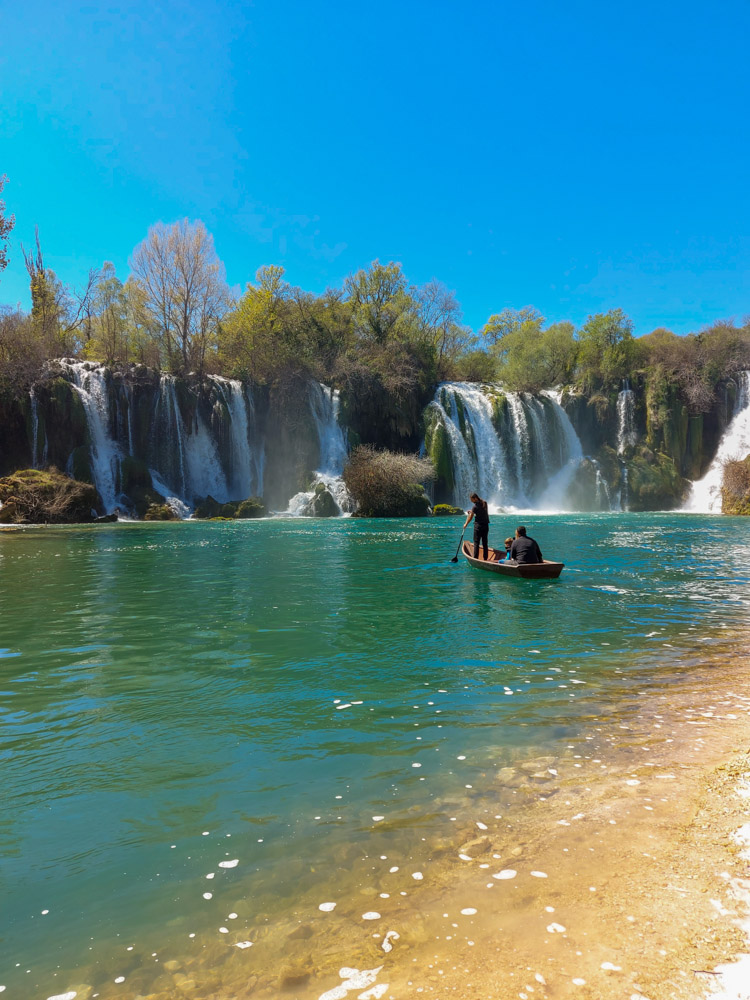
Stop 2: Dervish House
Dervish House Monastery is built into a cliff along a sparking turquoise river. The 500 year old monastery is now popular tourist attraction. When we visited in April it was still fairly peaceful and serene. However there were lots of huts lining the river, ready to be stocked with souvenirs plus cafes preparing for the summer tourists. I imagine the place would be bustling in the summer!
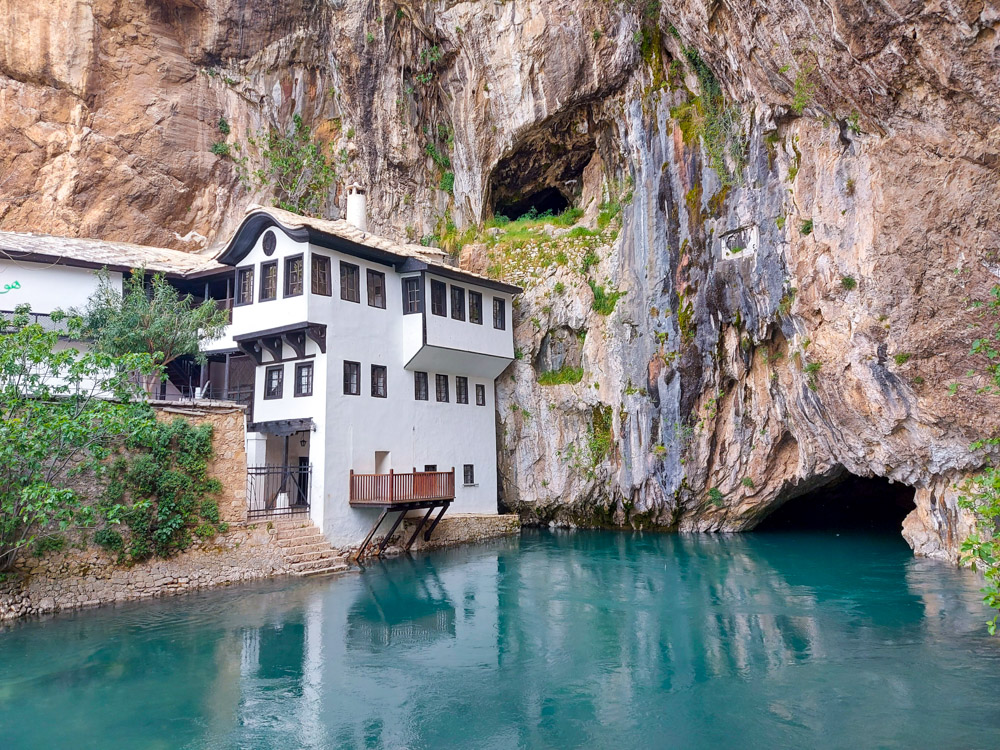
Stop 3: Blagaj Fortress
Blagaj Fortress is in the same village as Dervish House – Blagaj – which is just outside of Mostar. The Fortress is positioned up a hill, offering widespread views over the valley and Bosnian countryside below. You can park up fairly close to the castle, but there is still a winding uphill walk to reach it.
The castle is free to enter and explore.
After exploring Blagaj, head onwards to Mostar! We booked a two-night stay in Mostar. Unfortunately we didn’t get to stay the first night due to our delayed arrival. However, Mostar’s old town is quite small and easy to explore in one day, which leads us on to Day 2.
Day 2: Mostar, Bosnia & Herzegovina
Mostar is famous for its “old” bridge which connects the two sides of its old town over the Neretva River. But did you know the old bridge was actually built in 2004!? The older version of the bridge stood for around 400 years before its destruction during the war in the 1990s. The new bridge is still just as impressive!
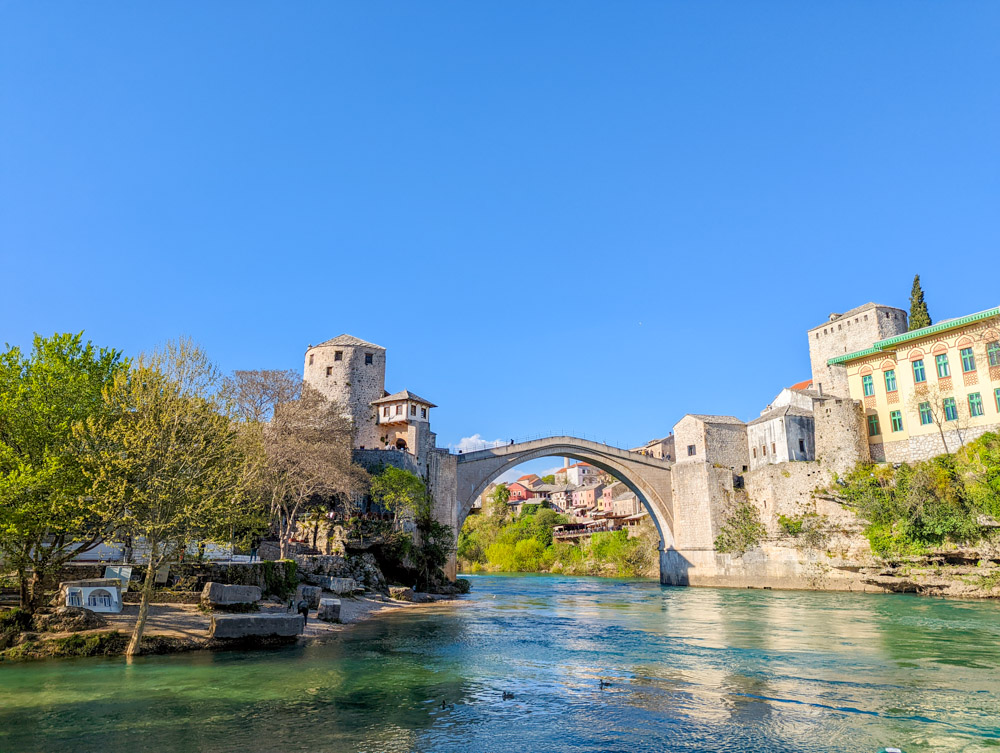
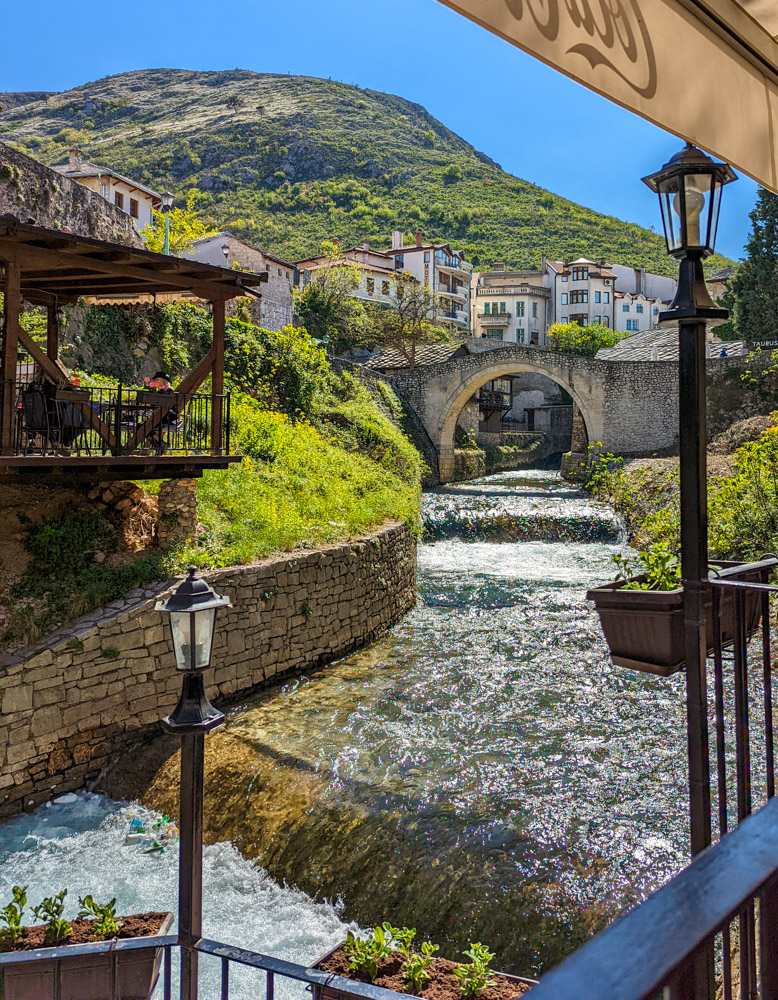
Mostar also has a lesser known but equally picturesque bridge – the Crooked Bridge. This is just a stones throw from the larger bridge but can be easy to miss.
Whilst in Mostar I would recommend sampling some traditional Bosnian dishes such as Ćevapi or vegetable stew at the Food House.
Read more about Places to Visit in Bosnia and Herzegovina
Day 3-5: Sarajevo, Bosnia & Herzegovina
After two (planned) nights in Mostar, we drove on to spend the next three nights in Sarajevo. As is the capital of Bosnia and Herzegovina and a much larger city, we wanted to spend a little more time in Sarajevo.
There are plenty of things to do in the city to fill three days. I would recommend starting with a free walking tour to get your bearings and explore the key areas. For example, Baščaršija, the old bazaar centred around Pigeon Square. There are lots of little shops, bakeries and bars to explore there.
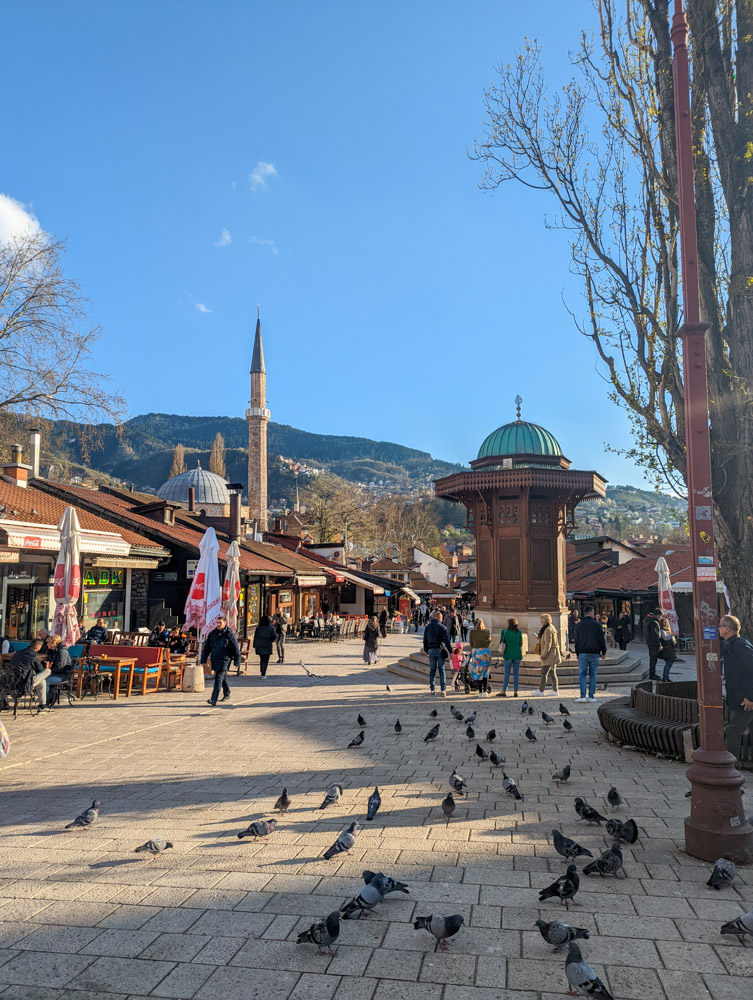
Sarajevo also has a rich and recent history to discover. As Yugoslavia fell apart and regions sought to be independent countries, Sarajevo was placed under a siege lasting almost three years. Visit the Museum of Crimes Against Humanity and Genocide plus the Sarajevo War Tunnel to learn more about the war that struck Bosnia and Herzegovina during the 1990s.
Another huge historical event to happen in Sarajevo was the assassination of Archduke Franz Ferdinand. This sparked the beginning of World War I. It took place by the city’s famous Latin Bridge. There is now also a museum detailing the years leading up to this event right by the spot where it happened. To learn more, visit the Sarajevo 1878-1914 Museum.
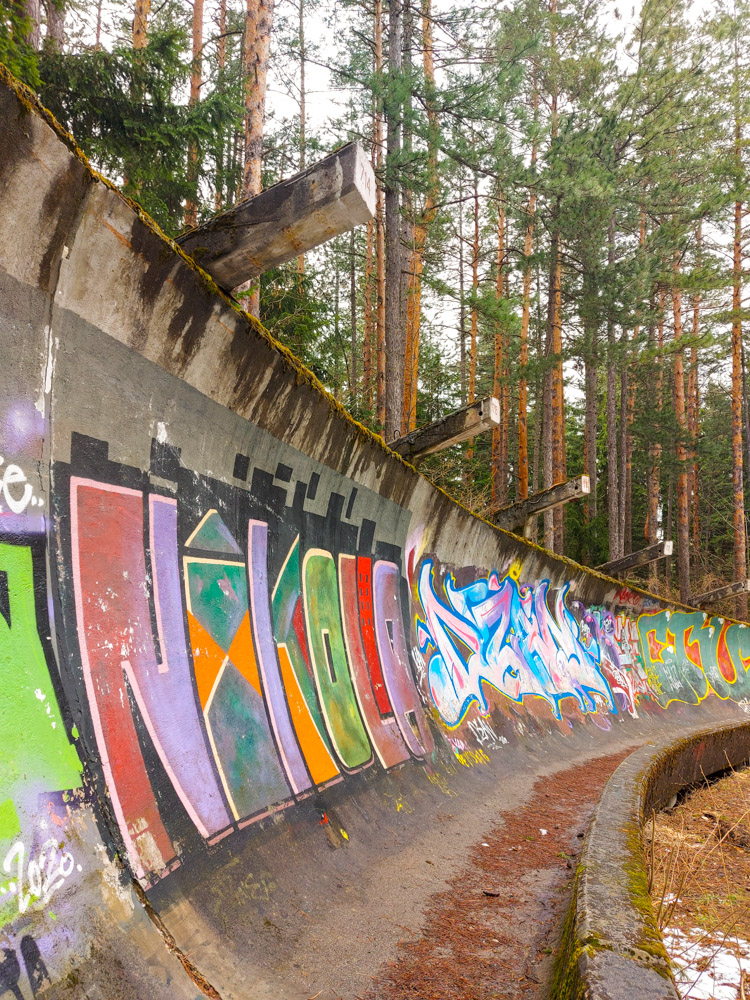
If you fancy something a little different – take the cable car up to the mountain and explore an abandoned bobsleigh track. The track was originally built for the 1984 Winter Olympics but has more recently become a canvas for graffiti and moss. There are also lots of hiking trails and view points to discover nearby.
Read more about things to do in Sarajevo
Day 6-7: Kotor, Montenegro
The drive from Sarajevo to Kotor was the longest of our trip at 4.5 hours. We had fairly bad weather that day so didn’t make many stops along the way. One of the most scenic parts of the drive is the last 30 minutes as you approach Kotor. The road skirts along the edge of the Bay of Kotor.
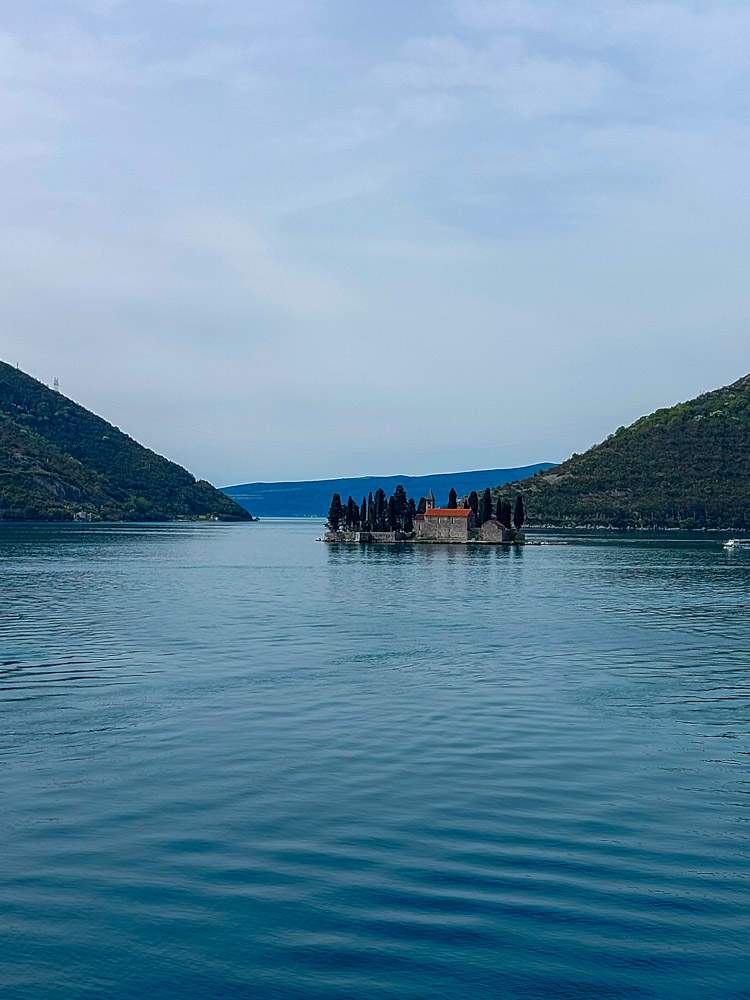
It’s worth stopping off in the old town of Perast for great views over the bay. From here you can also see (and take a boat to) two tiny islands. These islands house Our Lady of the Rocks Church and St George Monastery.
Once in Kotor, you can easily spend a lazy day strolling around the old town, the walls of the city and the local market along the harbour. If you want to be a little more active, I’d recommend hiking up to Kotor Fortress. The ruin itself is quite interesting to explore but views are really the best bit! You actually have to pay €8 to walk up the path to the fortress but there is a sneaky way around the back. If you really want to avoid the fee you can climb up the Ladder of Kotor and up through a window in the fortress.
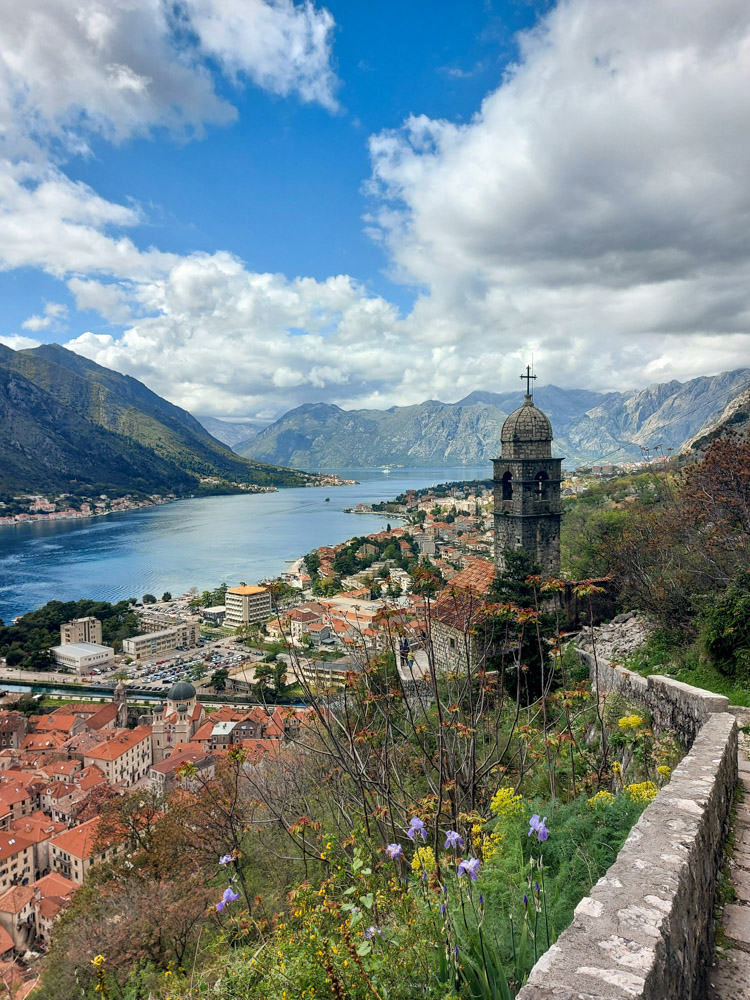
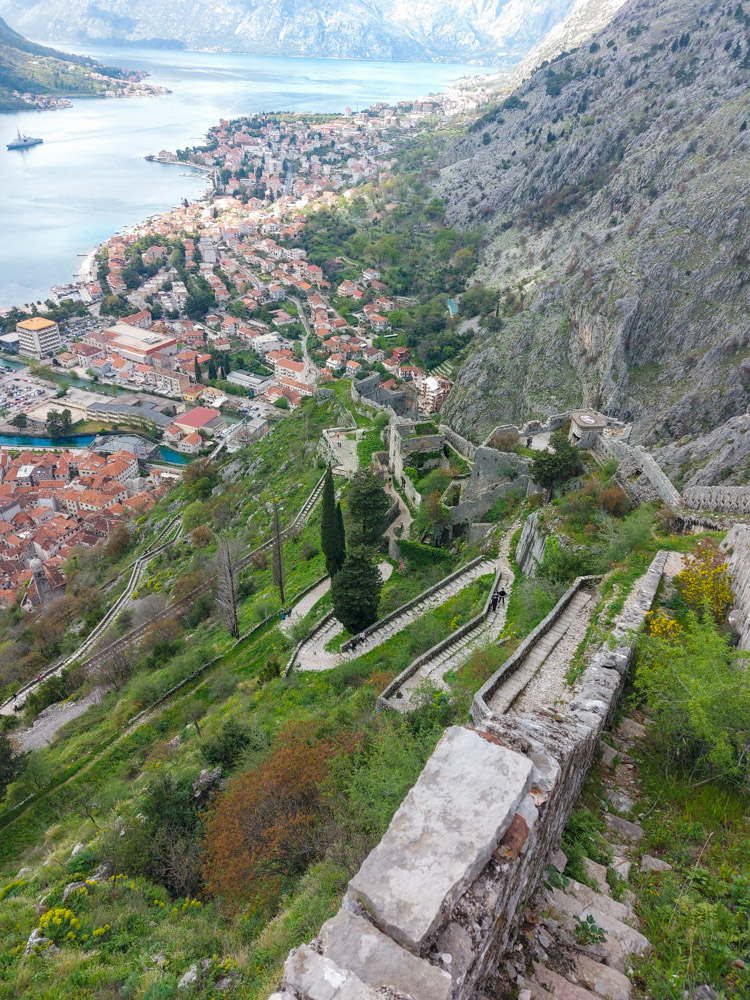
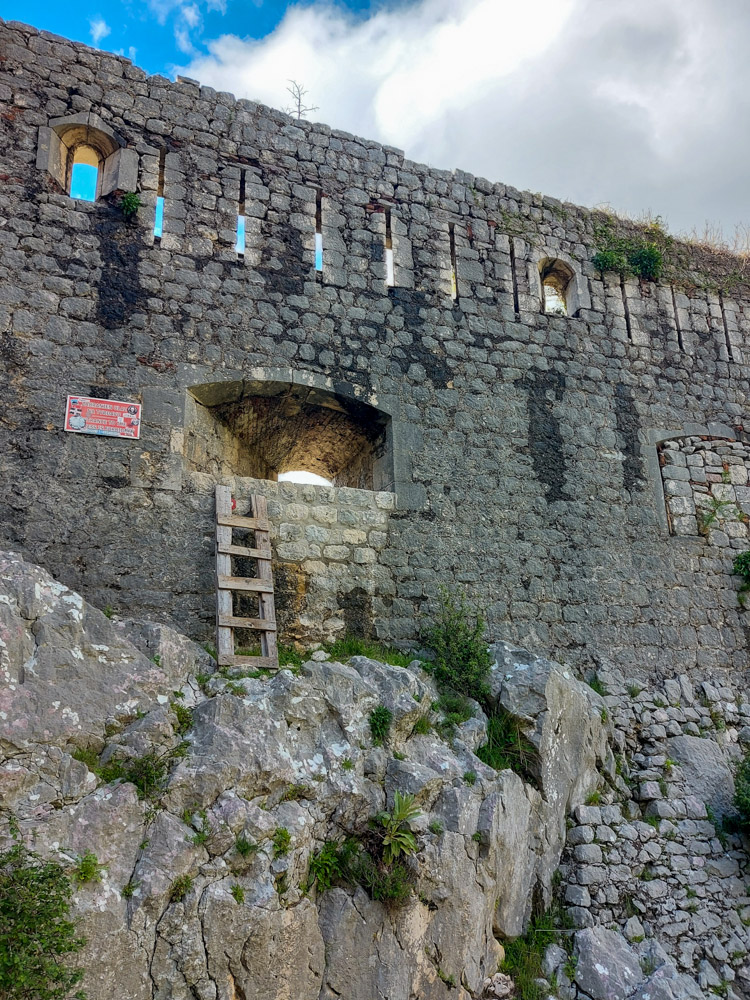
Day 8: Kotor to Shkodër, Albania
On our way out of Kotor, we drove towards Lovcen National Park, along the Kotor Serpentine. This famous road leads you from the bay up the mountains through many twists and turns! If you’re not a confident driver, definitely take this one slowly!
Stop 1: Lovcen National Park
Lovcen National Park costs €2 to enter but to visit the mausoleum at the very top of the mountain, you do have to pay another €5 which must be in cash – so make sure you carry some with you! There are hiking trails around the summit too. Be prepared for it to be a little colder at that altitude. When we visited in April there was still snow along the edges of some mountain roads.
Stop 2: Skadar Lake
Our last stop in Montenegro before crossing the border was at Skadar Lake. This lake is huge and straddles the border of Montenegro and Albania. I’d highly recommend stopping at the Pavlova Strana Viewpoint. This is at the North Western edge of the lake and offers stunning views of the islands and greenery surrounding the lake.
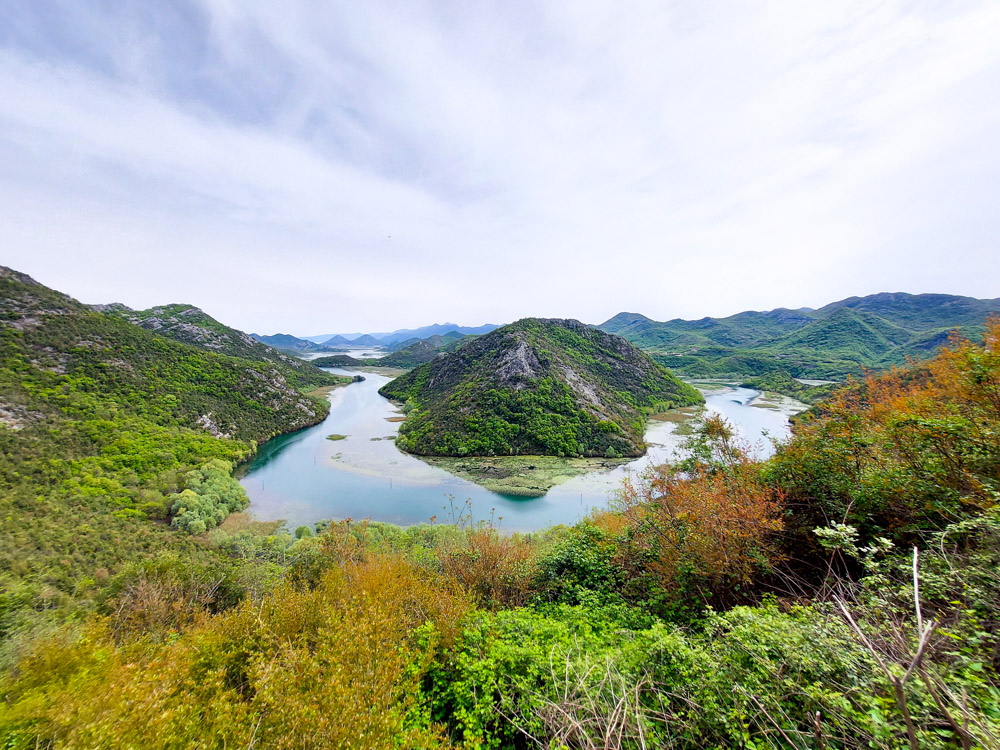
Day 9: Shkodër, Albania
Shkoder is just across the border from Montenegro, on the other side of Lake Skadar. The city is fairly small but has a colourful centre and lots of cheap bars, restaurants and bakeries!
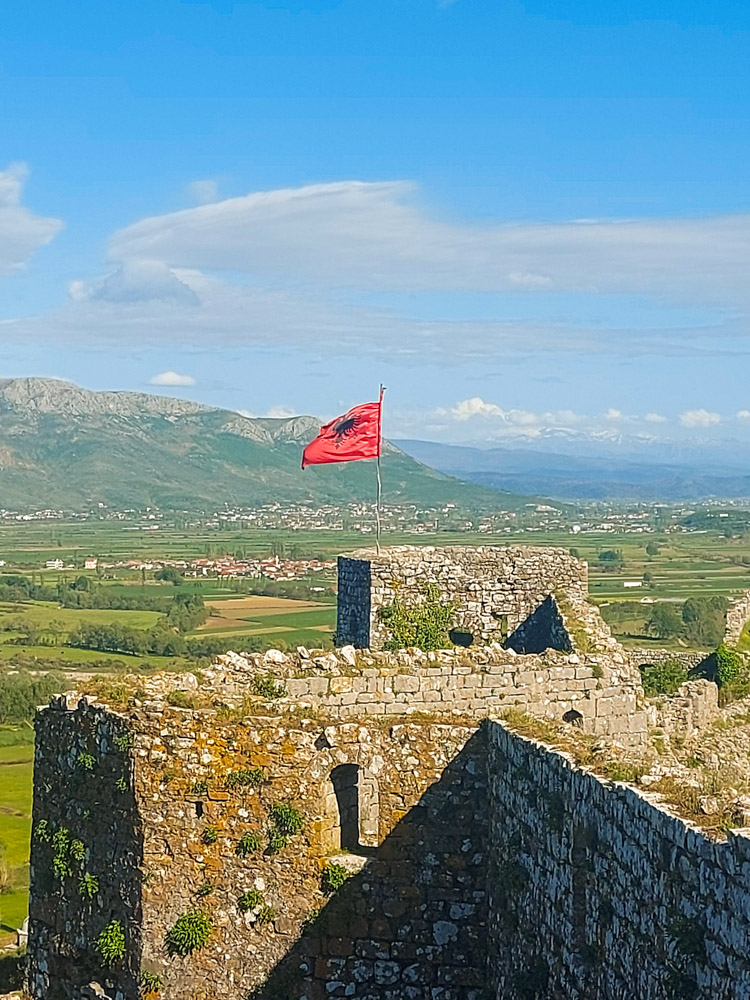
Rozafa Castle is the main attraction in the town. The castle ruins are situated on high ground (as all good castles are!) so provide great views over the area.
We also spent an afternoon driving along the lake to the nearby village of Shiroka and a few other smaller lakeside villages.
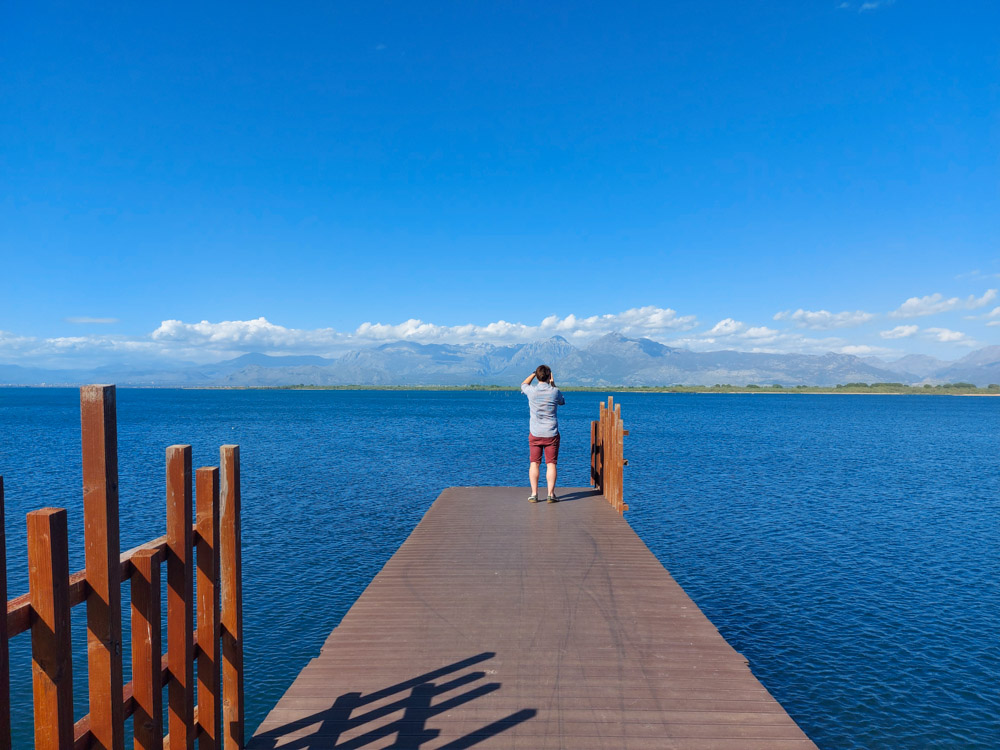
If you want to spend more time in Albania, further north there are lots of great hiking locations and national parks. We didn’t have the time to explore these on this trip, unfortunately. Plus we were told that in April it would still be too cold and dangerous to go up into the mountains.
Day 10: Drive through Montenegro
After two nights in Albania, we were on the move again, heading for Dubrovnik. The majority of this drive was back through Montenegro. To break up the 4 hour drive we stopped off at various points to explore more of Montenegro.
Stop 1: Bar Old Town
Bar is a small old town hidden in the hills of Montenegro. Unusually, you actually have to pay to enter within the walls of the old town. This is €2 and again, must be paid in cash so just make sure you always have a few euros with you!
Stop 2: Sveti Stefan
Sveti Stefan is kind of an island off the Montenegrin coast. But it’s also not quite. It’s connected to the mainland via a causeway. The entire island is a luxury resort with several restaurants and cafes. You don’t have to be staying there to pop in for lunch! Unfortunately when we visited in late April the gates to the island were locked, I think the resort only opens in the summer season. We could still relax on the beach either side of the causeway though!
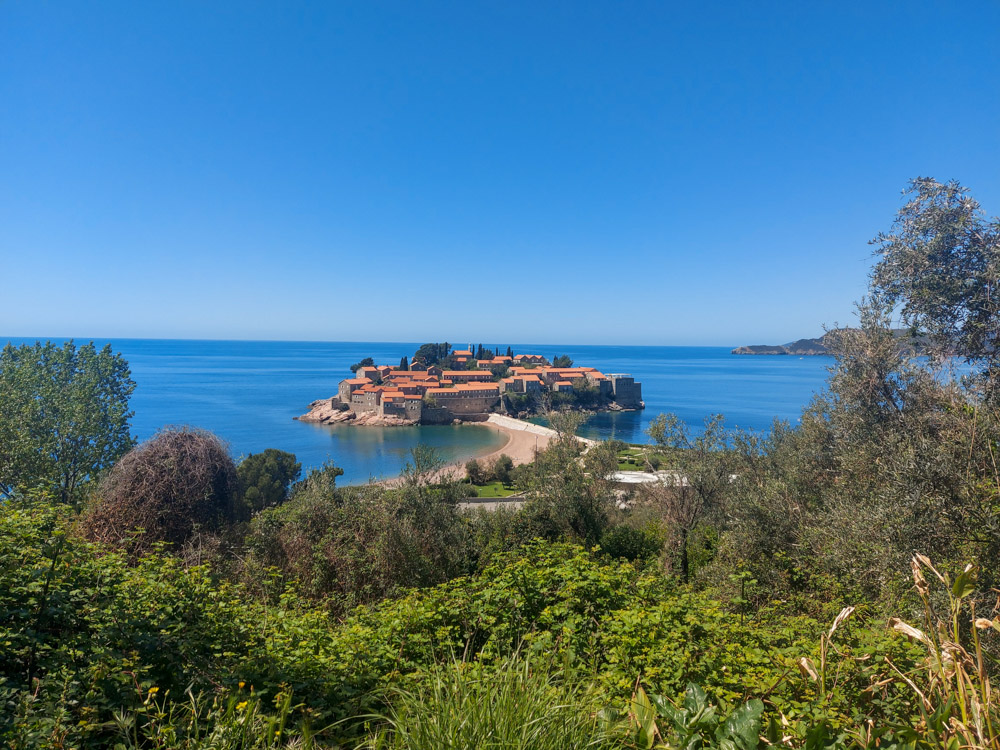
Stop 3: Budva
Budva is a fairly big city in Montenegro, but with just a flying visit, we focused on the old town. Here you can explore the narrow streets, visit the citadel and walk along the coast to the see the Ballerina of Budva statue.
Read more about places to visit in Montenegro
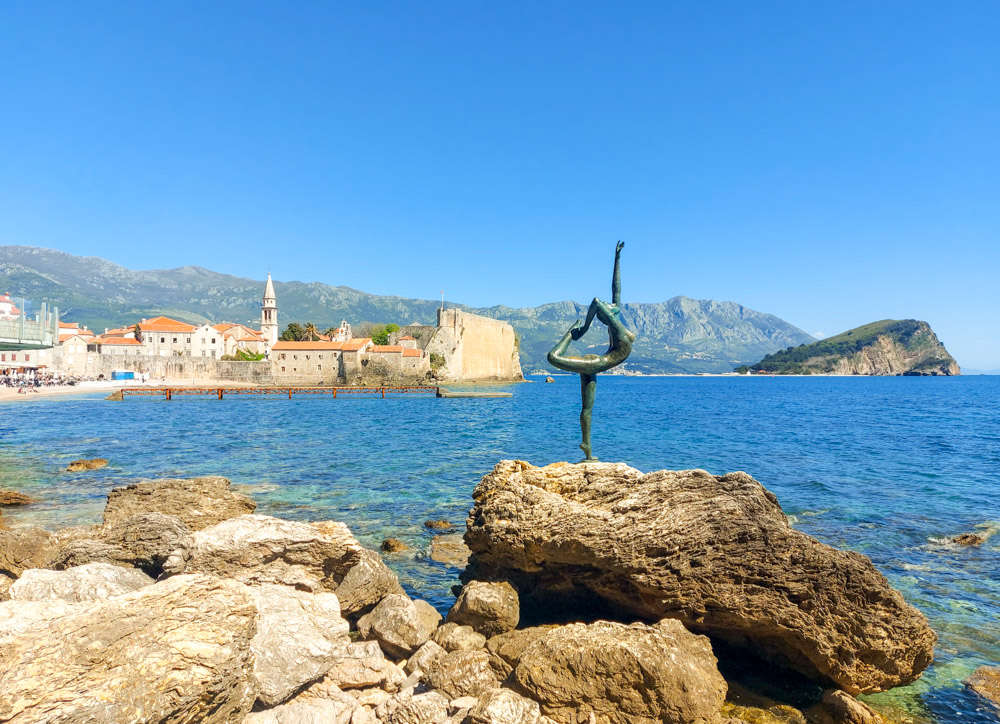
Day 11-14: Dubrovnik, Croatia
Our final stop on our two-week road trip was Dubrovnik in Croatia. Dubrovnik has a lot to offer so we decided to stay in the city for 5 days to take in as much as we could! We stayed in an AirBnB in an area called Ploce. This was around 10-15 minute walk uphill from the old town so we had a fantastic view over the city. As it was a little further out we also had free parking and it was really easy to drive to. If you’re driving to Dubrovnik, definitely don’t stay in the old town, there are no cars allowed and you might end up paying a fortune to park nearby!
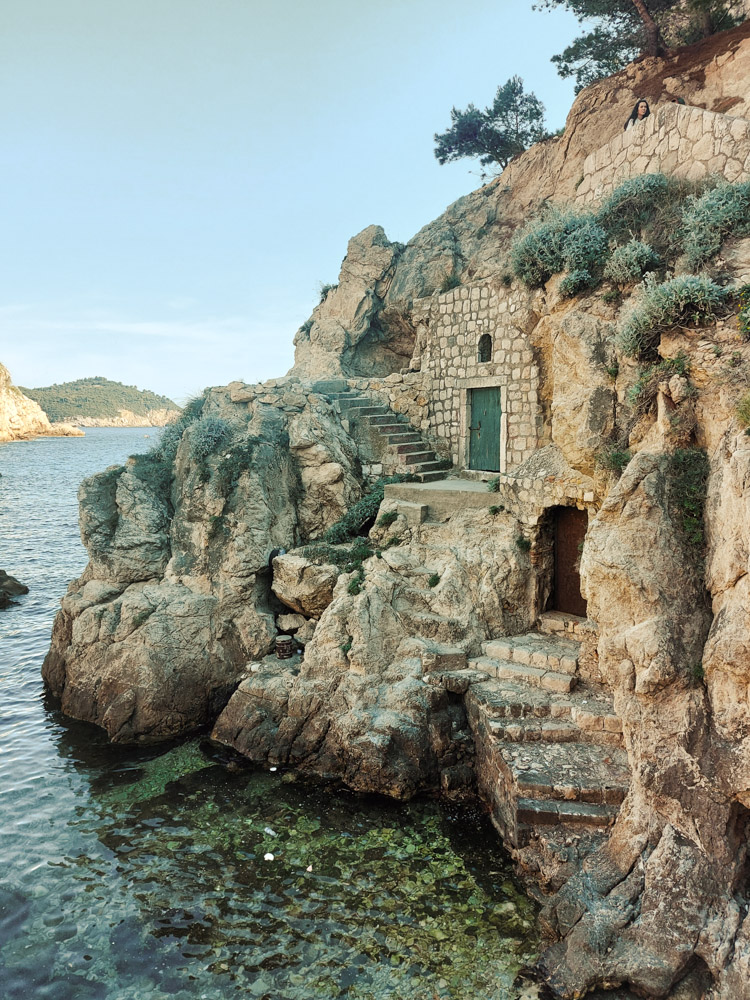
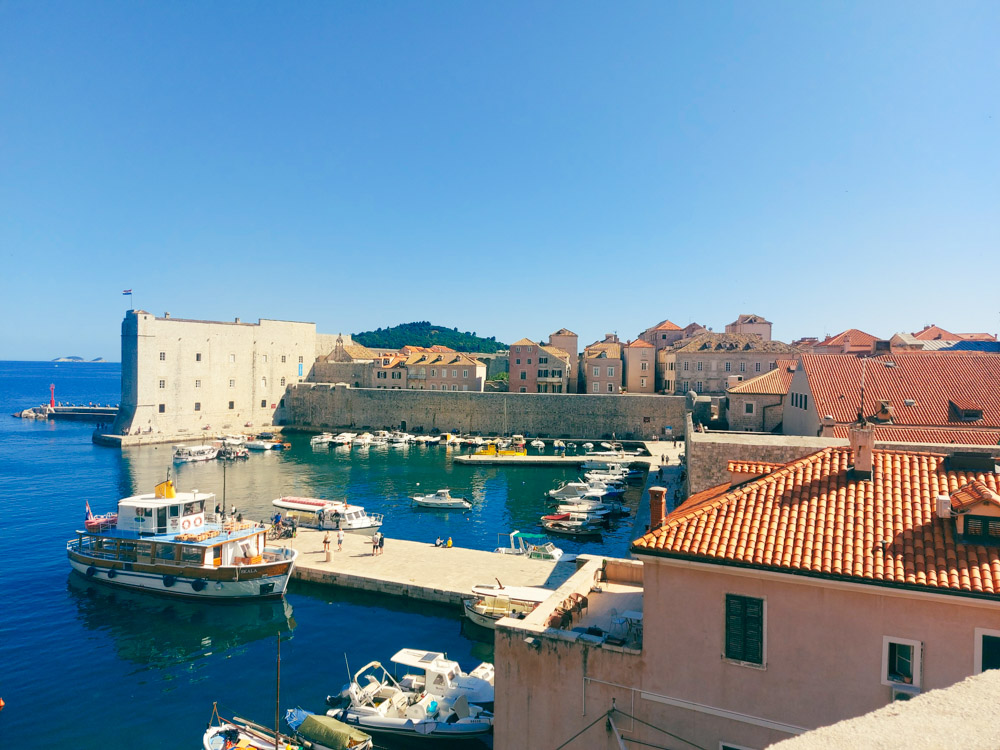
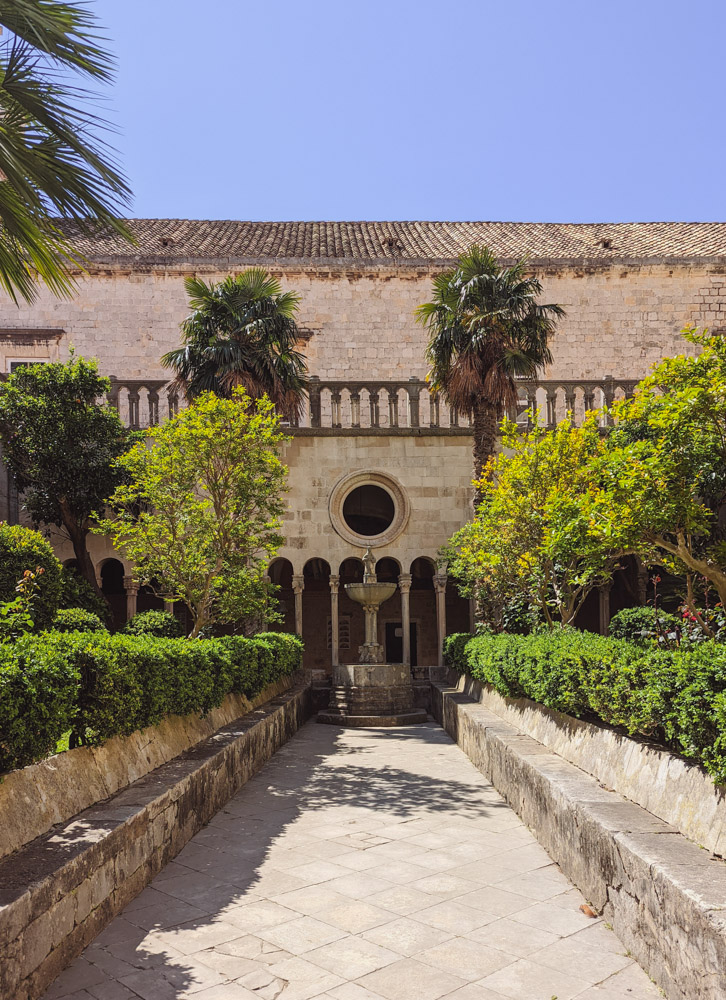
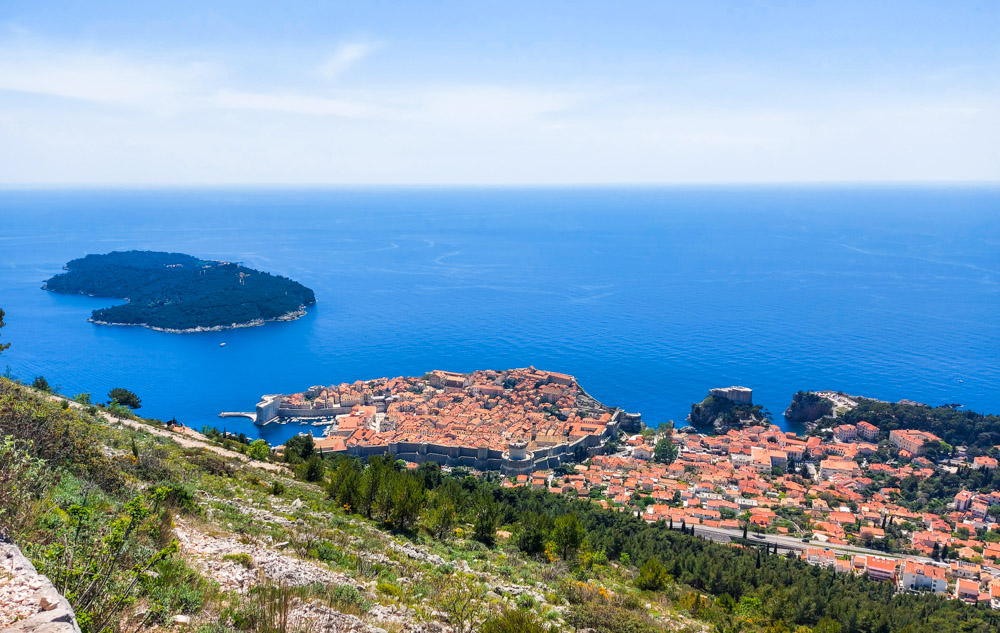
Dubrovnik has a lot to offer. To start, I would recommend picking up a Dubrovnik Card. Especially if you want to walk along the City Walls as the Dubrovnik Card costs the same as entry to the walls but also includes entry to museums such as the Rector’s Palace and the Maritime Museum.
We spent a couple of afternoons exploring other areas too. I’d recommend visiting Lokrum Island and driving round to the nearby town of Cavtat.
There is a lot to do and see in Dubrovnik! So much so that it deserves it’s own blog post! Read more about things to do in Dubrovnik
The cost of a two week road trip in the Balkans
A two week road trip driving across four countries in Europe may be cheaper than you think! In general the Balkans is a fairly low-cost place to visit. Dubrovnik was by far the most expensive in terms of daily costs and accommodation. It was also the longest we stayed in one place. So if you did want to cut costs even more with this itinerary, spend less time in Dubrovnik and maybe more days in Montenegro or Albania.
Here is the rough break down of our costs when we visited in late April 2022. These prices are for two people.
Transport Costs
| Flights from the UK to Dubrovnik (Ryanair), for 2 people (hand luggage only) | £104 |
| Flights from Dubrovnik to the UK (Jet2), for 2 people (hand luggage only) | £103 |
| Small hire car for 2 weeks | £350 |
| Additional hire car costs* | £140 |
| Petrol total spend (we only filled up 3 times) | £76 |
| Total transport costs | £773 |
*Additional hire car costs – when we collected the car, we were told to drive into Montenegro and Bosnia and Herzegovina we would need to pay extra for insurance. I’m not sure if this was essential but we paid it anyway.
Search for up to date car hire prices:
Accommodation Costs
We found all of our accommodation on either Booking.com or AirBnB. These were mostly mini apartments with free parking, walking distance from the centre. Some were a little more basic than others. I’ve added links to the ones I would recommend.
These costs are all for two people sharing a room and is the total price for that stay, not the price per night. I told you parts of the Balkans are cheap!
| 2 nights in Mostar, Bosnia & Herzegovina | £31 |
| 3 nights in Sarajevo, Bosnia & Herzegovnia | £97 |
| 2 nights in Kotor, Montenegro | £44 |
| 2 nights in Shkoder, Albania | £34 |
| 5 nights in Dubrovnik, Croatia | £343 |
| Total accommodation costs | £549 |
Daily Costs
Daily costs for food, attractions and souvenirs will be different for everyone. But here is a rough idea to give you an idea of the prices in each location.
In Bosnia and Herzegovina we could easy eat out for less than £20. This would include two mains, two sides or starters and two alcoholic drinks! The prices for museums there were between £2-£6 per person.
In Montenegro, prices were a little more expensive but not drastically. A meal for two with drinks was around £30 in Kotor. We didn’t visit any museums but attractions such as hiking up to Kotor Fortress and entry to Locven National Park were between £2-£7 each.
Albania was cheaper again. The hostel we stayed in offered Aperol Spritz for €2! Here we were quite easily eating out for less than £20 between the two of us.
Dubrovnik was definitely the most expensive place we visited. Meals for two were around £30-£60 but could be more if you chose to eat at fancier places! Attractions were pricey too. To walk on the city walls alone was around £28. But you can get a better deal by buying the Dubrovnik Pass for the same price and also getting entry to lots of museums.
Balkans Travel Posters
Things to know before you go to the Balkans
Driving in the Balkans
It is fairly easy to drive around the Balkans. Apart from in the cities, most roads were quiet and straightforward. There were a few winding mountain roads and narrow dirt tracks that made me a little anxious at times but luckily we rarely had other cars coming the other way and we had no issues.
You technically need an international driving permit to drive in Bosnia & Herzegovina, Montenegro and Albania. I say technically because no one ever asked to see ours. Not at the hire car company or any borders crossings. I would get one just in case though. They’re easy to pick up from certain Post Office branches in the UK. The permits cost £5.50 and last three years.
Currency in the Balkans
Every time we crossed a border I was confused again by a new exchange rate! Whilst the four countries we visited didn’t all officially deal in Euro, many would except euro. I would recommend having cash with you in Albania and Montenegro. We found many restaurants, shops and attractions there did not take card payments.
Here are the official currencies and the current exchange rates:
| Currency | 100= £ | 100 = € | 100 = $ | |
| Albania | Lek | £1 | €1 | $1 |
| Bosnia & Herz | Marka | £45 | €51 | $60 |
| Croatia | Kuna | £12 | €13 | $16 |
| Montenegro | Euro | £87 | €100 | $117 |
Language in the Balkans
Bosnia and Herzegovina has three official languages: Bosnian, Serbian and Croatia. All of these languages, as well as Montenegrin are very similar. A tour guide in Croatia told us that someone speaking Croatian could easily have a conversation with someone speaking Bosnian and they would be able to understand everything. So you don’t need to worry about learning key phrases in lots of languages! This also means that if you have a translation app, usually you can get away with just downloading one of the four and it would recognise words from the others.
In the areas we visited the vast majority of people we encountered spoke a decent level of English so we were able to get by on our shamefully poor language skills.
Data Roaming in the Balkans
Croatia was the only country of the four that we were able to get free data roaming in with our UK phone contracts. This meant they were had to download maps when we had wifi so we could navigate to our upcoming stops.
Most of the time we had no issues, but Google Maps, didn’t always seem to suggest the best route in the Balkans. I’m not sure if this is because we were using downloaded maps, rather than live. Sometimes the route seemed to take us down winding country lanes, rather then sticking to motorways. The time estimates weren’t always accurate either.
When is the best time to visit the Balkans?
We had a great time when we visited in late April. Technically this is out of season so some things (like Sveti Stefan) appeared to be closed but that also meant we got discounts and cheaper prices on other things (like the boat to Lokrum Island).
Weather-wise, I would recommend April-May or September. It was mostly quite warm for us, aside from a few snowy patches at the peak of the mountains in Sarajevo and Kotor. I’d recommend avoiding the peak of summer in July and August as it’s not going to be very comfortable sitting in a roasting car for too long! Also, Dubrovnik in particular is very busy and hot in the height of the summer!

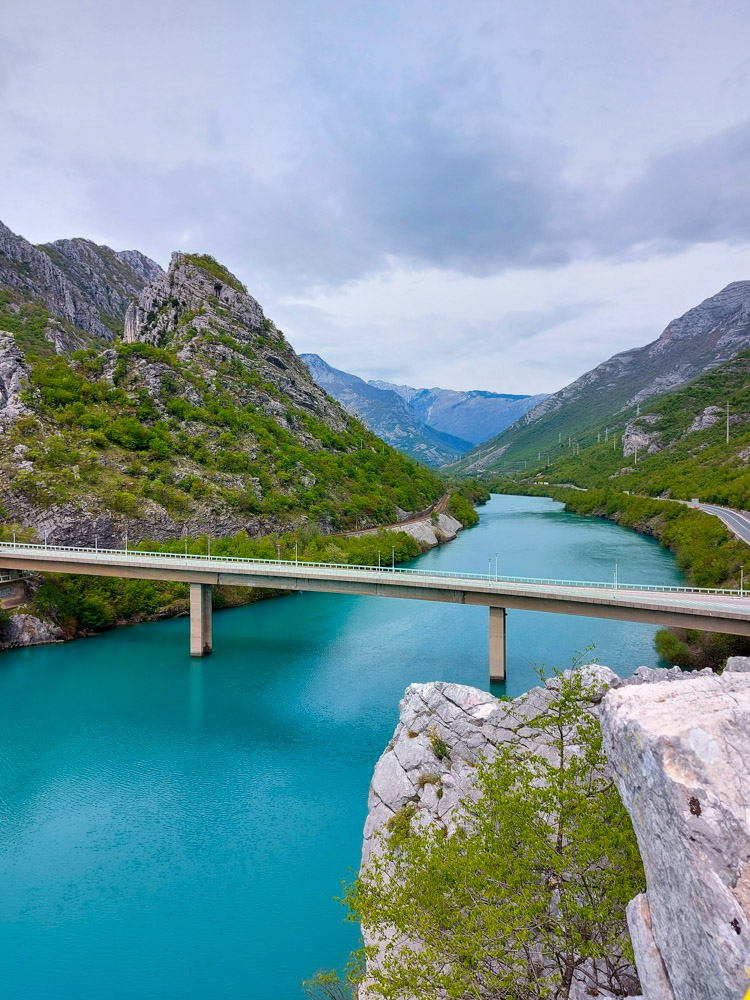
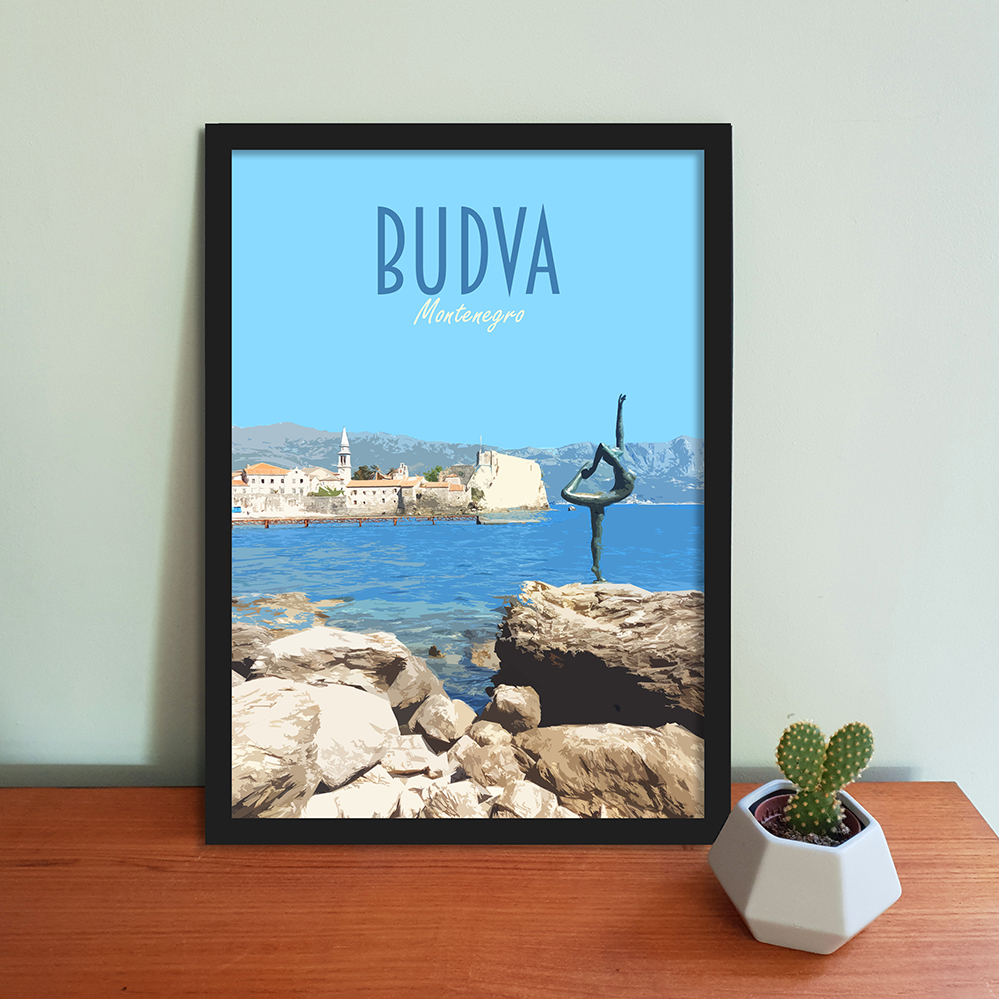
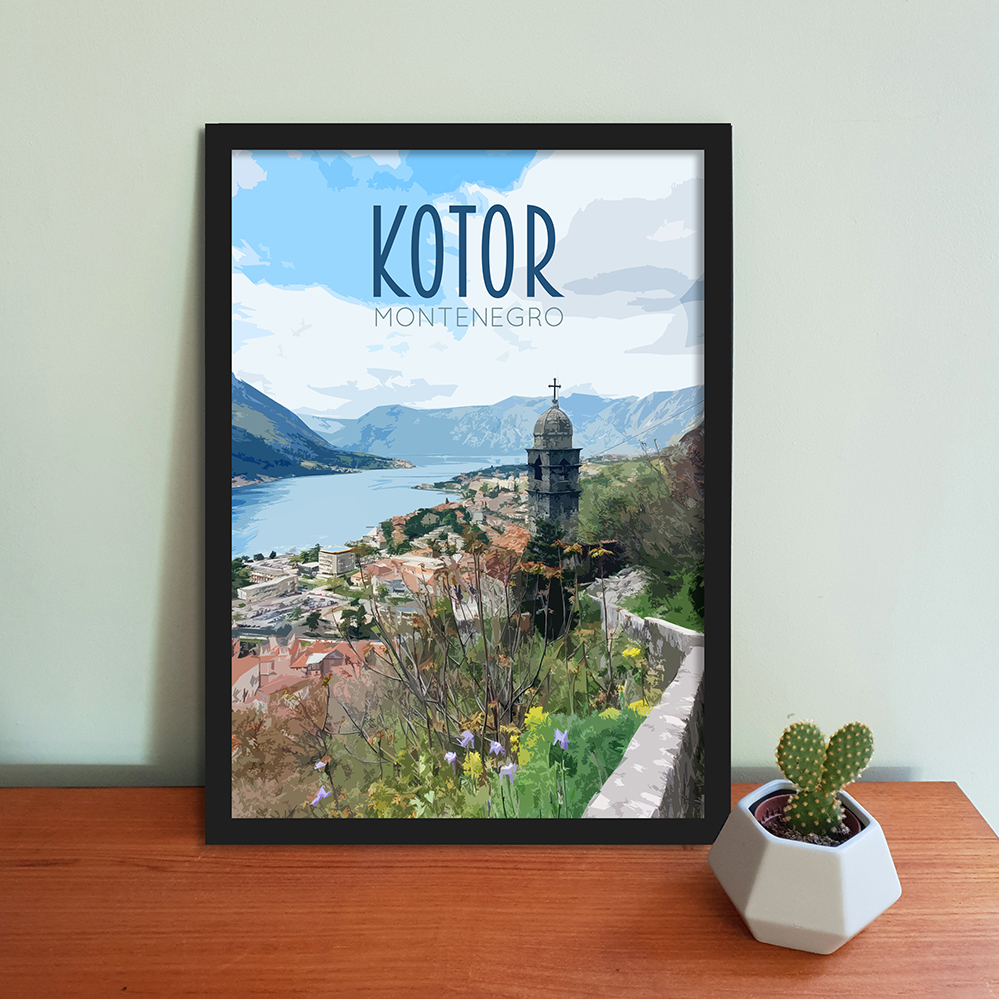
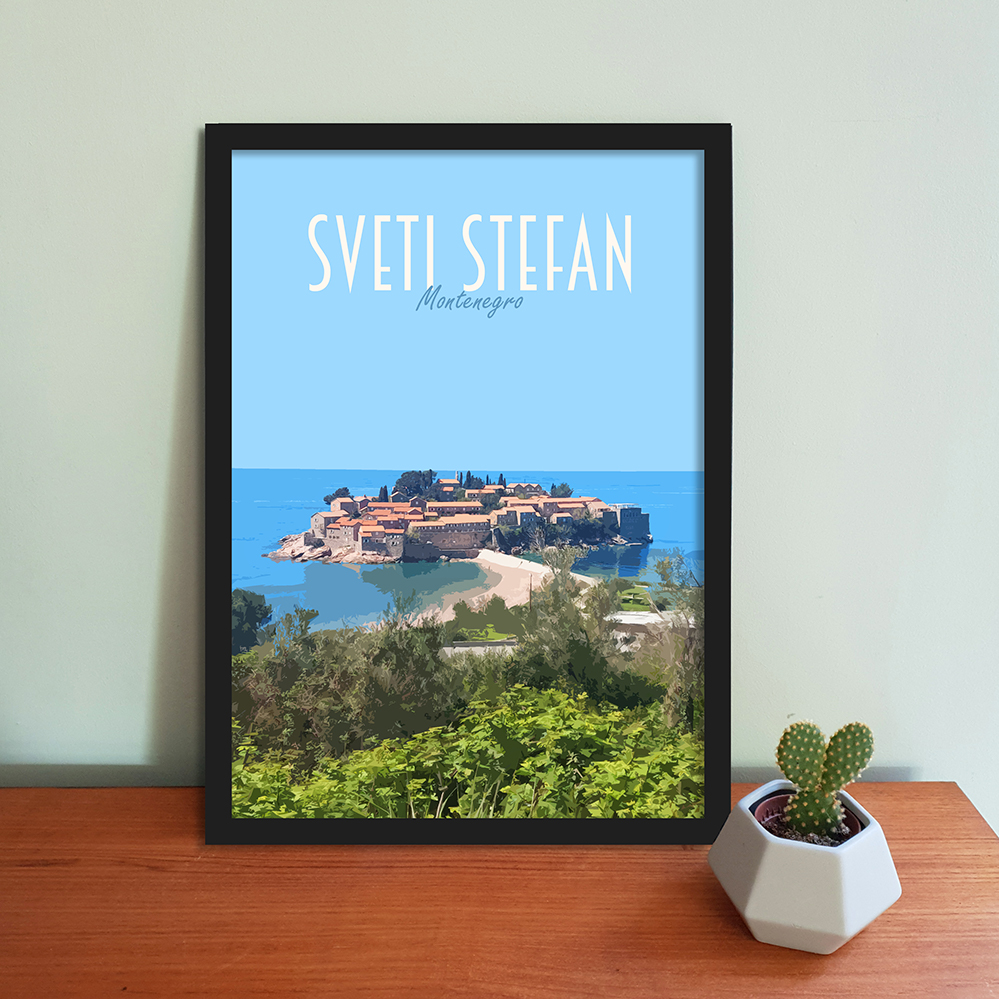
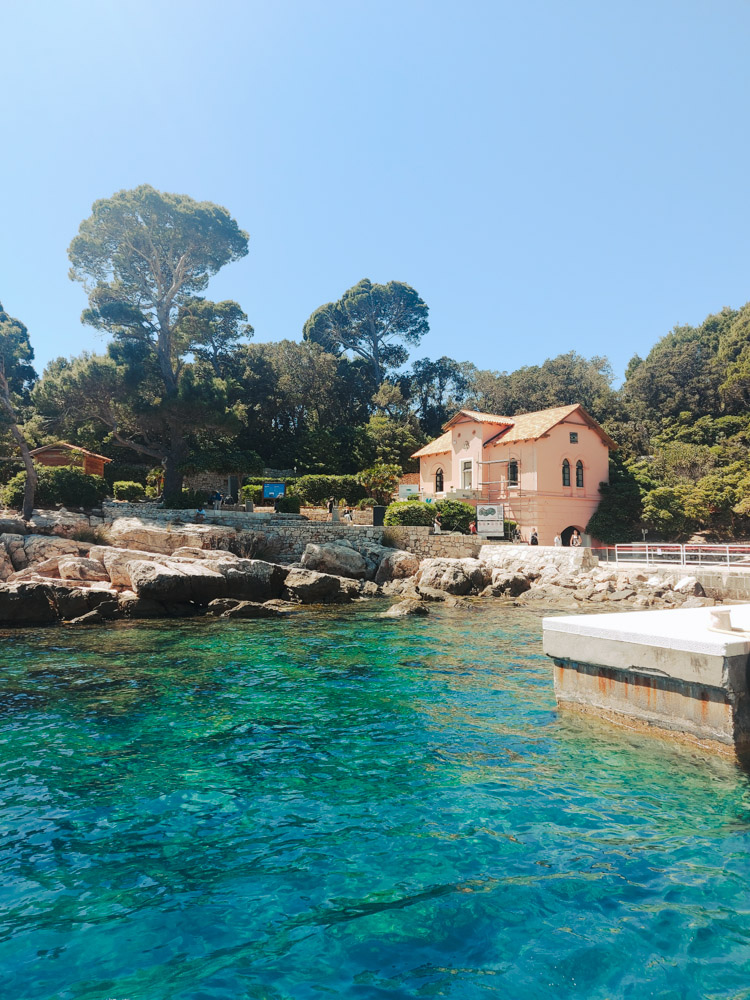
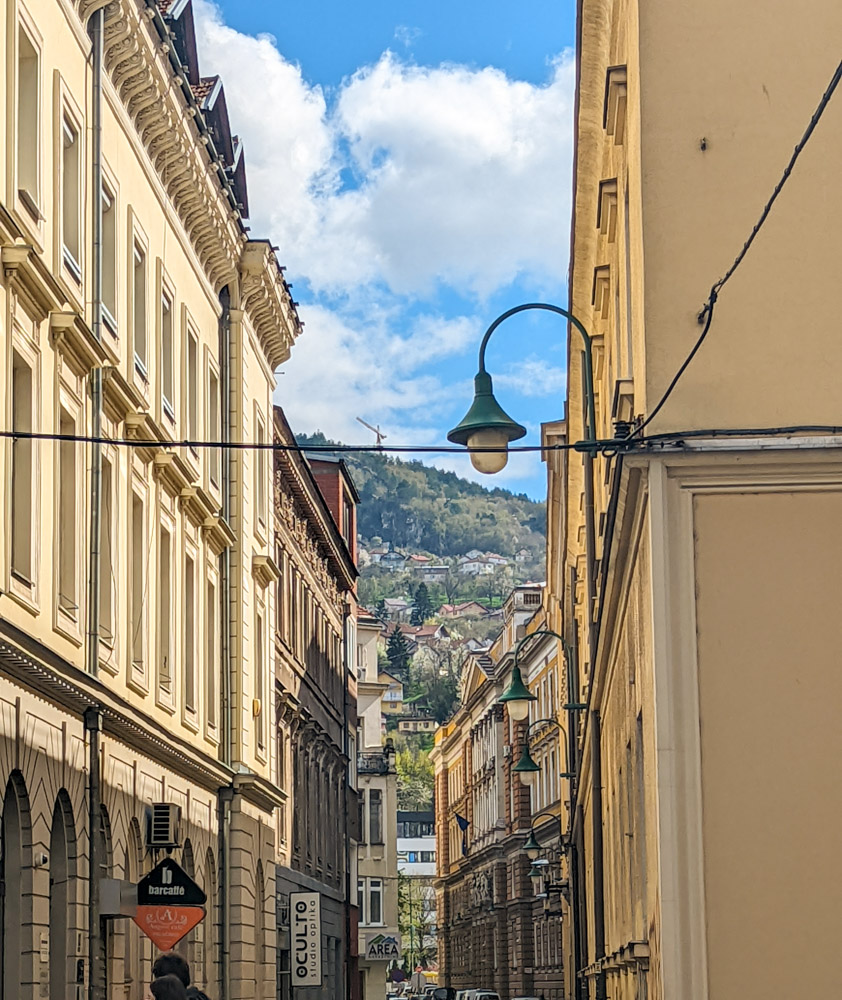
Thanks for this great article. Using the link to check car hire, none of the companies note Albania as a permitted country to travel to. Was this an issue for you? We are Australian if that makes a difference.
Hi Sue, we used a company called Avia (not Avis) because their T&Cs included Albania. However when we went to collect the car they insisted we had to pay extra to cross the Albania border. Kind of annoying but we just paid it because we have planned and booked everything at that point. There was no trouble crossing the border though.
Hi Clare, just wanted to reach out and say thank you for putting all of this information together. I just got back from my Balkans roadtrip and followed your path step by step, leaving out Albania because of time constraints. The scenery was just jaw-dropping! Thank you again for taking the time to put all of the details together for people like me! Sincerely, Aya
Hi Aya,
Amazing, I’m so glad you enjoyed the trip and found this post useful 🙂
Hi Clare, thank you for posting your itinerary! We’re planning a Balkan road trip but only have about 9-10 days and would love to follow as much of your itinerary as possible. If you had to cut out one portion of the trip, which would it be to fit this into a shorter amount of time?